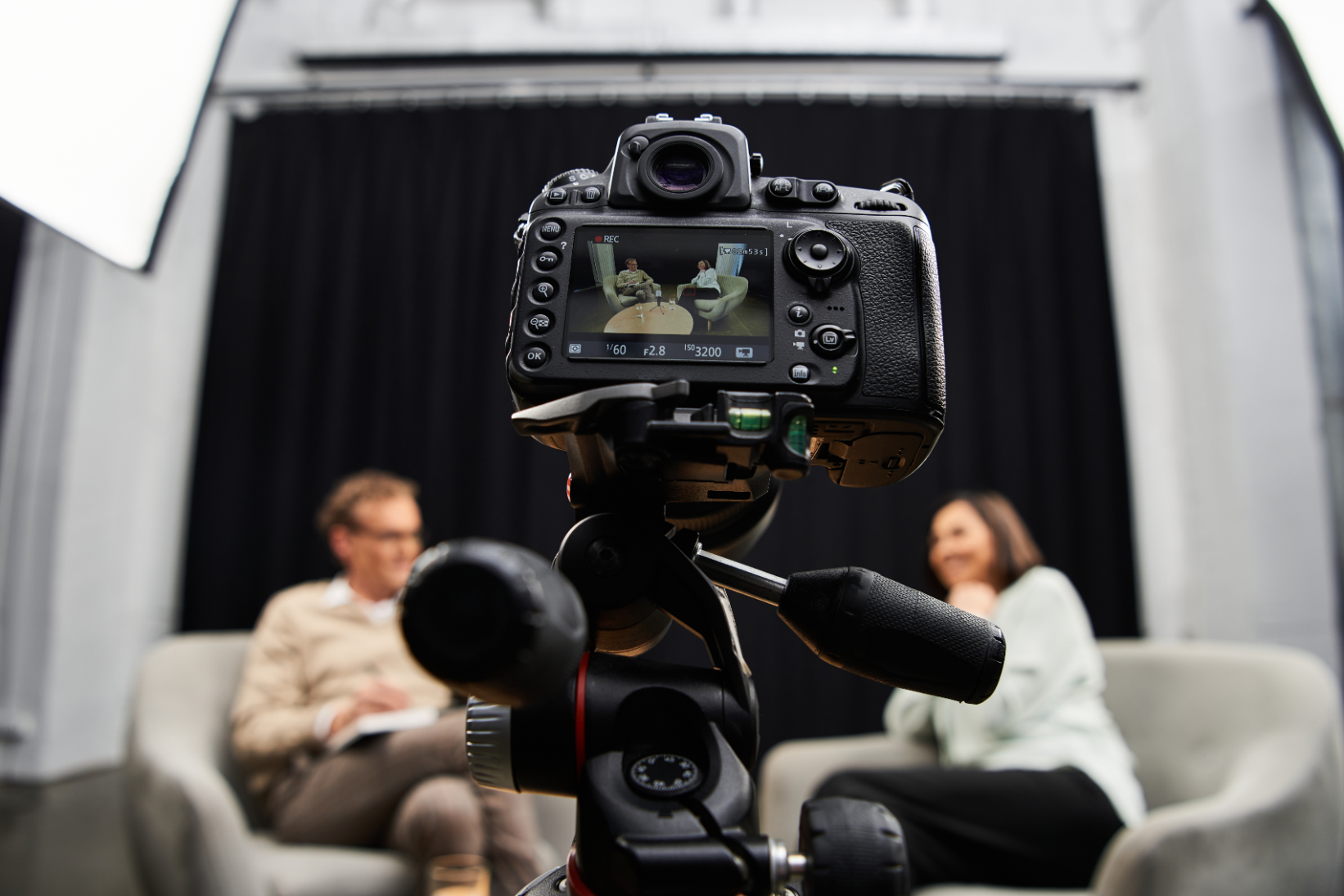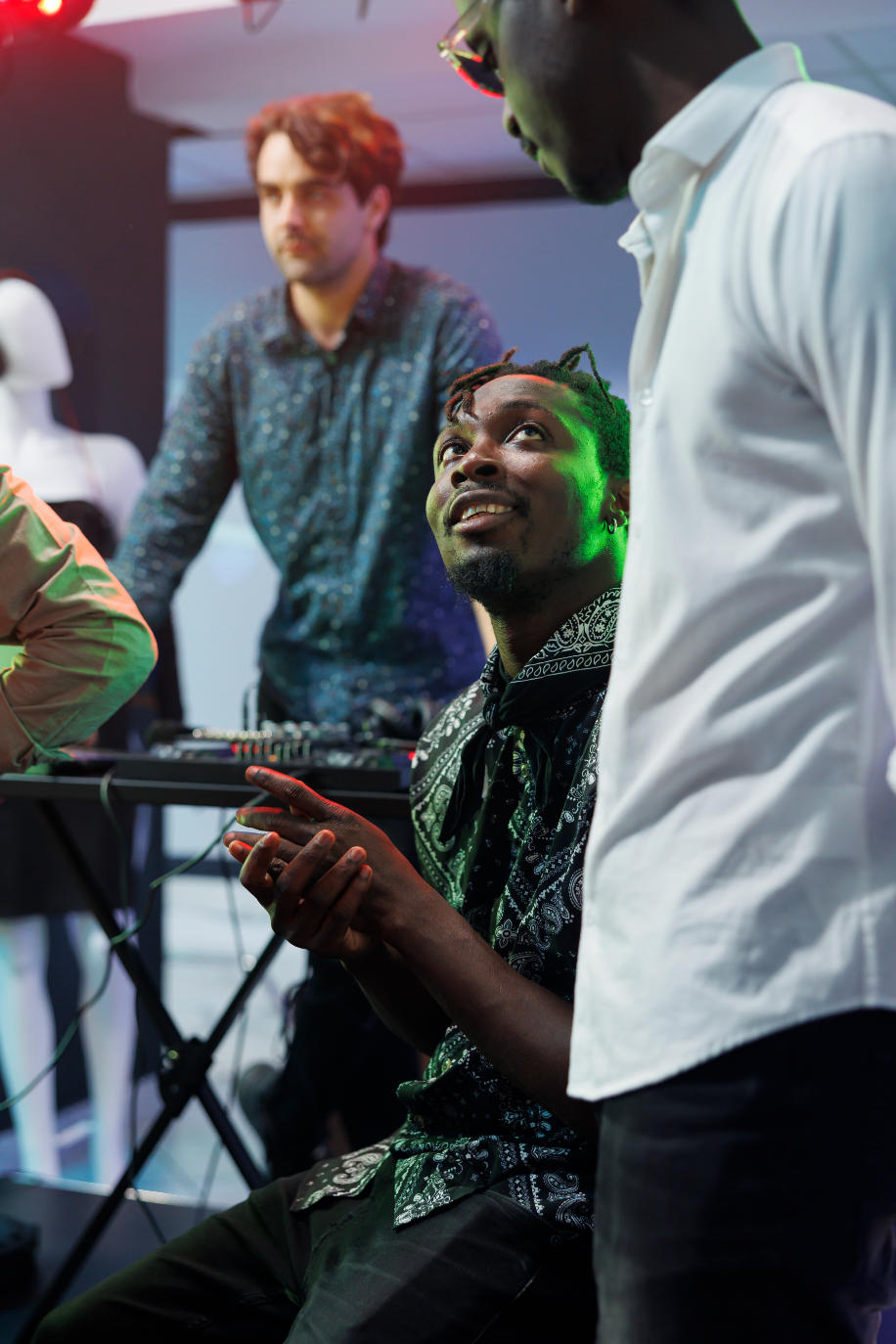Key Video Production Terms You Must Know
.avif)
Are you interested in video production but find yourself overwhelmed by technical jargon and terminology? Look no further! This blog post will provide you with a comprehensive introduction to the essential video production terms you need to know. Whether you are working with a video production company in Bangalore or exploring new opportunities, understanding the basics is the key. From frame rate to aperture, we will break down the most important terms and concepts used in video production in an easy-to-understand manner.
By the end of this blog post, you will have a solid understanding of the foundational terms and concepts that are critical to video production. So let's get started and dive into the world of video production!
What are the basic phases of video production?
Video production typically involves several phases, each with its own set of tasks and objectives. While the exact workflow may vary depending on the project, these steps are trusted by even the top production houses in Delhi. here are the basic phases of video production that every video production house follows:
Pre-Production
This is the planning phase where you develop your ideas, create a concept, and prepare for the actual production. This phase may include tasks such as writing a script, storyboarding, location scouting, casting actors, and planning the logistics of the shoot.
Pre-Production Terms that you should know
Outline
An outline is a written summary of the key elements needed to convey your story, such as characters, props, and events. It helps you stay focused on your objectives and resources as you plan your script and storyboard.
Story
A story is the plot or sequence of events that make up your video. It can be conveyed through narration, character actions, or scenes. During the story development phase, the focus is on constructing the message and the world in which it takes place.
Draft
In pre-production, a draft is an early version of the script that has yet to be revised or approved by project stakeholders. It is a preliminary stage that remains open to changes and adjustments.
Script
A script is a written document that outlines the story's plot, characters, locations, and dialogue. The script primarily focuses on dialogue, but it may also include brief descriptions of visuals if necessary.
Shot
A shot refers to how a subject or location is framed within the camera's view. Shots can be wide, medium, or close-up, as well as other types.
Storyboard
A storyboard is a visual representation of your story's events, often including sketches or illustrations of each scene. Storyboards also include descriptions of camera movements, character actions, and important dialogue.
Scenes
A scene is a continuous action or sequence of events that is captured on film or in animation. A scene refers to a discrete portion of your video where a character or object starts and finishes an action.
Recce
In the context of video production, a recce refers to a reconnaissance visit to a location where filming is planned to take place. During a recce, the production team visits the location to assess its suitability for filming, including factors such as lighting, sound, access, and safety.
Call Sheet
A call sheet is a document used in film and video production that lists the cast and crew for a specific day of shooting. It includes important details such as the location, call time, scene number, and other relevant information for everyone involved.
Production
This is the phase where you actually shoot the video footage. This involves setting up the cameras, lighting, and sound equipment, directing the talent, and recording the footage.
Let us break down the terms according to the most important aspects of the video shooting process.
Camera
A-Cam
The "A cam" may also be referred to as the "master camera," and is typically the camera that is closest to the action, providing the primary perspective for the viewer.
A-Roll
A-Roll refers to the primary footage or animation that serves as the main focus of a video. In video production, the A-Roll is typically the foundation of the final product, as it provides the main narrative and drives the story forward.
Aspect Ratio
The aspect ratio is the width and height of your video. A wider aspect ratio like 2.4:1 is commonly used in movies to create a cinematic look. A vertical aspect ratio like 9:16 is suitable for mobile devices and social media.
Field of View
The field of view is the area of the scene that the camera lens can capture and record. It is determined by the focal length of the lens, the size of the camera sensor, and the distance between the camera and the subject.
B-Cam
In video production, the B-Cam is a secondary camera used to provide additional footage that supports or complements the footage captured by the primary camera.
B-Roll
B-roll is a crucial aspect of video production that helps to support the main focus of your video, which is typically referred to as A-roll. In single-camera setups, a B-roll can be used to provide additional context, detail shots, or scenery that support the primary footage.
Focal Length
Focal length is the distance between the lens and the image sensor where light enters the camera. It is commonly referred to by its millimeter (mm) marking on the lens. A 20mm lens is considered wide, a 50mm lens is considered normal, and a 100mm lens is considered long.
Frame Rate
The frame rate determines how many individual images or frames are shown per second in a video, which creates the illusion of motion. Common frame rates for video include 24fps, 30fps, 60fps, and 120fps.
DMX
DMX (Digital Multiplex) is a communication protocol used in stage lighting and effects equipment. It allows for the remote control of lighting fixtures, fog machines, and other devices through a single control board.
Gels
Gels, also known as color filters, are thin sheets of colored plastic or polyester that are placed in front of a light source to alter the color temperature of the light. They are commonly used in video and film production to create a specific mood or effect or to match the color temperature of different light sources in a scene.
Learn More About Lighting in our recent blog post, Cinematography - The Art and Craft of Lighting and Lens for the Moving Image
Camera Movement
Pan
To pan means to rotate a fixed camera horizontally to capture a scene from left to right or vice versa.
Tilt
Tilt, on the other hand, is a camera movement that involves rotating the fixed camera vertically to capture a scene from top to bottom or vice versa.
Crane
A crane shot, also known as a boom shot, involves physically moving the camera up or down on a crane or boom arm.
Zoom
Zooming in or out is a camera technique where the shot is made closer to or farther from the subject using a zoom lens without moving the camera.
Dolly Zoom
A dolly zoom, also known as a zolly, involves zooming in or out while simultaneously moving the camera in the opposite direction to keep the subject in the same position in the frame while changing the size of the background, creating an unsettling effect.
Gaffer
A gaffer is the head electrician on a film or video production set who is responsible for the lighting design and execution. They work closely with the director of photography to achieve the desired visual style for the project and supervise the electrical crew in the placement, rigging, and control of lighting equipment.
Post Production
This is the phase where you edit and refine the video footage. This may include tasks such as video editing, sound editing, color correction, adding visual effects, and adding music or other audio elements. Generally, for a video production company in Mumbai handling commercials, post production is where the final magic happens.
Video Editing
Raw Footage
Raw footage can refer to unedited footage or footage shot in a raw format that allows changes to be made in editing.
Cut
A cut is a transition from one shot to another without a transition, and it can also refer to dividing a clip into multiple clips.
Dissolve
Dissolve is a transition effect that can be used to fade to or from black or another color or to transition from one scene to another.
Timeline
The timeline is the horizontal area where video assets are added, deleted, cut, rearranged, and previewed during the editing process.
Sequence
A sequence can be a combination of still images that create an animated moving image, the assembly of multiple shots to create a scene, or the working space where you edit your video.
Color Correction
Color correction is the process of adjusting the video's colors to remove any strange color-casts and achieve a neutral point.
Color Grading
Color grading is the process of adjusting the colors and tones in a video to create a specific look or mood. It involves changing the brightness, contrast, saturation, and hue of the footage to achieve a desired aesthetic.
Freeze Frame
A freeze-frame is a still image from the video that is extended in length to make the footage motionless.
Rendering
Rendering is the process of previewing your video files in real time within your editing software. The duration it takes for your computer to complete rendering your video is called rendering time.
Exporting
Exporting refers to converting your edited footage or animation into a format that others can view, such as .mov or .mp4.
Compression
Compression is the technique used to reduce the file size of audio or video files while maintaining quality. Applying compression to your files reduces their size, but it can also lower their quality.
Digital Integration
Digital integration in video production refers to the process of seamlessly combining different digital assets and technologies to create a cohesive final product. This includes integrating various software and hardware systems, such as cameras, editing software, visual effects software, sound mixing software, and more, to ensure that all elements work together seamlessly.
Learn the fundamental tips for editing videos in Premiere Pro here.
Audio Editing
Audio Mix
The audio mix involves adjusting the levels of individual audio tracks, such as dialogue, music, and sound effects, to create a balance in the final product.
Equalization
It is the process of adjusting the loudness of different frequencies in an audio file to alter its sound quality.
Voiceover
A voiceover is a type of dialogue audio track that is heard in a video or film, but the speaker is not visible on screen. This can be used for narration or to convey a character's thoughts.
Want to learn more about Voiceovers? Read our blog.
Dubbing
Dubbing involves recording new dialogue by voice actors and then synchronizing it with the visuals to create a seamless viewing experience. Dubbing can also be used to replace poor quality or unusable audio recordings in a video with new, professionally recorded audio.
Conclusion
With hundreds of video production companies in India and the rise in video consumption, it becomes crucial to understand these video production terms for creating high-quality videos and staying ahead of the competition.
From pre-production to post-production, each step requires attention to detail and a solid grasp of the terminology involved. By familiarizing yourself with these terms, you'll be able to communicate more effectively with your team, make better decisions during the video production process, and ultimately produce a video that effectively conveys your message and achieves your goals.
Looking for a video production company in Bangalore? Contact us and let’s get started with your next video production project.


